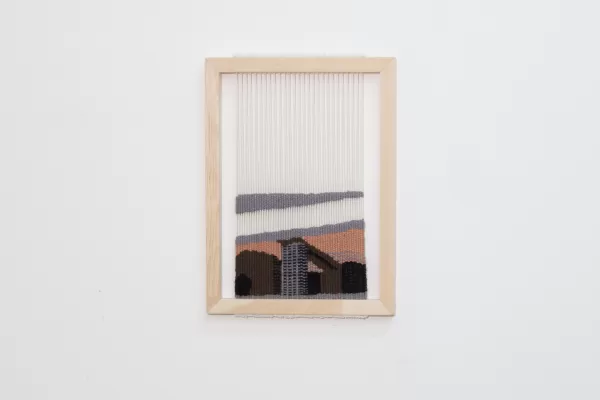Lot
283
Vilnius (Bu_i_t_)
Tapisserie de laine et coton, bois, 2019
21.59 x 29.21 cm
Handwoven tapestry depicting an abstracted, geometric view of the Lithuanian National Opera and Ballet Theatre in Vilnius.
Biographical note
My work deconstructs prevailing hierarchies between art and craft through the subversive act of hybridizing textiles and architecture. Technically trained as a weaver, I engage in a "textile-adjacent" practice: for instance, applying textile processes to architectural materials, translating photographs into weavings, or creating site-responsive structures that teeter between strong and soft.
I am fundamentally interested in process and place, particularly architecture and interiors. Images of urban landscapes, and materials present in the city - concrete, steel, wood, industrial textiles such as tarp or rope - often make their ways into my artworks.
Both textiles and architecture are media that we live our lives in: one at the intimate scale of the body, and one at the monumental scale of rooms and towers. My research delves into architecture, urbanism, textile history, craft and materiality studies, and feminist theory, seeking points of intersection between textiles, the body, and the built environment.
Alcove, Chambre, Tableau is a project examining the relationships between tapestry, photography, and architecture. Tapestry is an ancient technique of woven imagery, which creates a flexible matrix of image and texture. As a weaver and a photographer, I am intrigued by the concepts of function, reproduction, symbolism, and concealment that tapestry's rich history evokes.
In the past years, I have been producing small tapestries based on photos depicting the integration of Modernist architecture into the texture of different cities. My photographs have a characteristic close-cropping and urban architectural subject-matter, which translate to tapestries with an unsettling sense of perspective and a fine balance between geometry and clumsiness. These weavings incorporate transparency, with unwoven areas, and are integrated into custom frames which recall the tapestry loom. Tapestry's age-old tradition is updated with imagery that reflects the fragmentation of our contemporary society.

